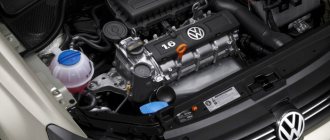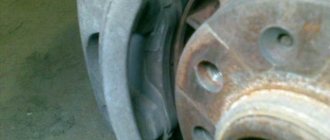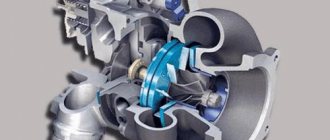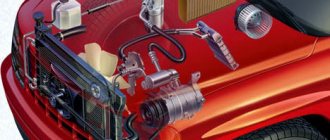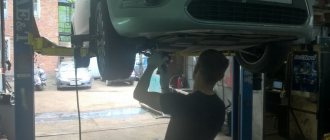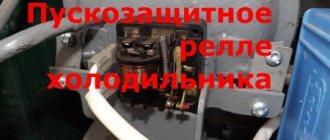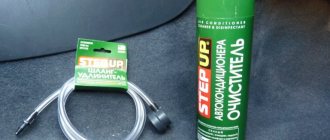Article tags: car air conditioner malfunctions
2531 1
No matter how reliable the equipment is, sooner or later it begins to fail. It is important that the car owner is able to recognize air conditioner malfunctions in time and, without wasting time, contact the appropriate service department to fix the problem.
Signs of a car air conditioner malfunction
The following signs most often indicate that your car's climate control system is in poor condition.
- Oil stains and drips are visible on the compressor or lines of the car air conditioner - most likely, the system has become depressurized, which is why refrigerant and oil began to leak.
- The air conditioner turns off spontaneously when used for a long time in a traffic jam - most often this happens due to a malfunction of the fan or radiator, which no longer provides heat relief. Due to overheating, the pressure in the system increases, which leads to the compressor being turned off by the pressure sensor. High pressure in the low circuit of the car air conditioner may also indicate the presence of contaminants in the system or excessive freon filling.
- The air conditioner turns off spontaneously from time to time - most often this happens due to a malfunction of the compressor solenoid valve. It happens that it becomes dirty and cannot work correctly.
- After turning on the air conditioner, a musty smell appears in the cabin, then water begins to drip - a sign of contamination of the evaporator, which needs urgent cleaning. It also happens that the evaporator drain pipe becomes clogged and condensation enters the cabin.
- After switching on, the system makes increased noise - the compressor, clutch bearing, or pulley-shaft coupling mechanism may have failed.
- The air conditioner cools the air worse or stops cooling altogether - most likely there is not enough freon in the system, urgent refilling is necessary.
- During operation, the pipes of the car air conditioner freeze, and an icy coating is visible on top of them - most often the cause of this is a broken expansion valve or dryer.
Compressor diagnostics
How to check a compressor
Let's consider troubleshooting the electrical parts of compressors.
Very often, when repairing an air conditioner, the fault is with the compressor, but in the end it may not be the problem at all. So how to properly diagnose a compressor?
Single-phase compressors with starting winding
To gain access to the compressor contacts, it is necessary to disassemble the air conditioner so that there is access to the compressor. Usually the contacts are protected by a cover that is screwed in place; you can find it by the wires that go to the compressor. After removing the cover, you will see three contact pins on which terminals with wires are attached.
It is necessary to remove the wires and measure the resistance between the terminals with a multimeter. We set the device switch to the resistance measurement function (indicated by the letter Ω).
- If the multimeter shows an infinitely large resistance between terminal C and the others, then this means a break; in the case of built-in protection, you need to make sure that the compressor is not overheated and the protection has not tripped; otherwise, and if the external protection is faulty, the compressor is faulty.
- If the resistance approaches zero, this means a short circuit and the compressor is also faulty.
The exact value of the resistance depends on the power of the compressor, the accuracy of your device and can range from approximately 1-50 Ohms. The resistance of the windings is the same, so it can be seen from the diagram that the resistance between terminals M and C should be the same as between S and C, and between S and M twice as much.
Each compressor has thermal protection, but it can be built-in as in the diagram or located under the cover, next to the compressor terminals. If it is not built-in, the so-called “tablet”, then it can be ringed separately and replaced in case of malfunction (it must be closed in the normal state, opens when a certain temperature is reached 90-120 ° C).
Let us immediately make a reservation that in this way we will not be able to determine short-circuited turns; there are other devices for this (but they also do not detect short-circuited turns stably enough). Measuring insulation resistance with a megohmmeter. A regular tester will not be able to check the insulation breakdown; it measures resistance using a low voltage of 3-9 V. A megohmmeter allows you to measure resistance with a higher voltage of 200-1000 V.
But you still need to first “ring” the windings with a multimeter, since you cannot measure the resistance with a megger if the winding is short-circuited to the housing. On the device you can select the voltage with which the resistance will be measured and the time during which the windings will be tested. It is necessary to measure the resistance between one of the three terminals on the compressor and, for example, a copper tube coming out of the compressor with a voltage of 250-500 V. The resistance should be in the range of 7-10 MOhm. If not, then the compressor also needs to be replaced.
Before taking measurements, carefully read the instructions for your device; high voltage is used, so if used incorrectly, you may receive an electric shock or damage the device.
Three-phase compressors and inverter air conditioner compressors
For three-phase compressors and inverters, the resistance between the windings must be the same, since they do not have a starting winding, but otherwise the method for identifying faults is the same as for a single-phase compressor.
Leak diagnostics
Very often, the service department, even having detected darkening of the thermal insulation, air conditioner oil, or a refrigerant leak, is limited, at best, to installing a filter on the liquid line or eliminating the leak and refueling the air conditioner, while radical measures are needed to save the compressor, which cannot be carried out at the installation site air conditioner
The result of such an attitude is always the same - compressor failure.
I would like to share my experience in repairing air conditioners in situations where the air conditioning compressor can still be saved.
The need to repair the compressor-condensing unit of an air conditioner in a workshop arises not only in an emergency situation, for example, when a compressor fails, but also based on the results of a preventive inspection of the air conditioner. Such situations may arise in the following cases:
- Based on the results of express analysis of compressor oil.
- If the freon circuit of the air conditioner loses its tightness.
- If moisture gets into the freon circuit of the air conditioner.
In these cases, even if the air conditioning compressor is still running, its days are numbered. Urgent resuscitation will help extend the life of the air conditioner.
Express oil analysis. These beautiful words hide quite simple actions:
- It is necessary to obtain a sample (take a sample) of refrigeration oil from the freon circuit.
- Compare its color and smell with an existing sample of good oil.
- Using the existing acid test, test the oil for the presence of acid.
How to take an oil sample for analysis? It is known that oil circulates along with the refrigerant in the freon circuit of the air conditioner. When the air conditioner stops, the oil located on the walls of the pipeline flows down along them. This oil can be sampled through the service port of the air conditioner. For this you will need:
- Ball valve with 1/4″ press.
- A short hose with a 1/4″ fitting (a hose from a pressure gauge manifold is quite suitable).
- Container for collecting oil.
- Clean laboratory test tube.
The procedure is as follows:
- Stop the air conditioner and allow the oil to drain along the walls of the pipeline for 10-15 minutes.
- Connect a ball valve to the service port.
- Connect the hose to the ball valve. Place the free end of the hose in a container to collect the oil.
- Open the tap. The gas coming out of the hose will carry the oil away. All that remains is to collect it in a container. (A little training, a few extra oil stains on your overalls and taking an oil sample is no problem for you.)
- Let the oil sit (since the oil contains dissolved refrigerant, it foams).
- Drain the sample into a test tube.
The next step in the express analysis is to compare the oil sample with the existing sample by color and smell. To do this, the same amount of oil from the sample and the reference oil are placed in two identical test tubes and compared with each other:
- dark oil color and a burning smell indicate that the air conditioning compressor has overheated. The cause of overheating could be a refrigerant leak from the air conditioner or operating the air conditioner in the Heat mode at low negative temperatures. In this case, the oil loses its lubricating properties. As a result of oil decomposition, resinous substances may be deposited on the walls of pipelines and internal parts of the air conditioner, which can subsequently cause failure of the air conditioning compressor.
- A greenish tint to the oil indicates the presence of copper salts in it. The root cause is moisture in the circuit. The acidity test for such oil is usually also positive.
- Transparent oil with a slight odor, not much different in color from the sample, indicates that resuscitation of the air conditioner is not needed.
And finally, the acid test will either completely dispel our fears, if the sample differs little from the sample, or will confirm the need for emergency intervention. If it turns out that the oil is good and the air conditioning compressor is working normally, you need to return the sampled oil to the air conditioner. The sequence of actions is as follows:
- You need to find the right utensils. A transparent tall glass with a diameter of 3-4 cm is best.
- Connect a ball valve with a hose to the service port, just like when taking an oil sample.
- Place the free end of the hose into the glass.
- Pour enough oil into the glass to cover the hose fitting.
- Mark the oil level on the glass.
- Briefly open the ball valve so that the freon displaces the air from the hose.
- Add the same amount of oil into the glass as was taken for testing.
- Turn the air conditioner to Cold.
- Close the air conditioner fluid port.
- When the pressure in the suction line drops below atmospheric pressure, open the valve and the oil flows through the service port into the air conditioner.
- Close the tap when the oil level reaches the mark.
- Turn off the air conditioner.
- Open the air conditioner fluid port.
Loss of tightness of the freon circuit can be caused by various reasons and does not always lead to catastrophic results.
What matters here is the location of the leak, the amount of refrigerant that has leaked, the time interval between the occurrence and detection of the leak, the operating mode of the air conditioner and other factors. Why is a refrigerant leak dangerous?
- The air conditioning compressor, cooled by the refrigerant, overheats as a result of a decrease in the density of the latter.
- The compressor discharge temperature rises, hot gas may damage the four-way valve.
- The compressor lubrication system is disrupted and oil is carried away into the condenser.
- Through the resulting hole, air containing moisture can enter the air conditioner.
Signs associated with a leak:
- Darkening of the compressor insulation.
- Periodic activation of compressor thermal protection.
- Burnt insulation on the discharge pipeline.
- The oil is dark in color with a burning smell.
- Oil acidity test is often positive.
If the leak is detected on time, the refrigerant has not completely disappeared, the air conditioner did not operate without refrigerant for long, and there are no accompanying signs - repairing the air conditioner in a workshop is not necessary.
The proportion of sudden, catastrophic leaks caused by the destruction of pipelines is very small; leaks more often occur through small leaks in flared joints, and if you constantly monitor the operation of the air conditioner, leaks can be detected in a timely manner. What to pay attention to:
- No more than 5 minutes after turning on the air conditioner, depending on the selected mode, should produce cold or warm air. If this does not happen, you must immediately turn off the air conditioner and call a repairman.
- If during operation of the air conditioner the tubes on the outdoor unit are covered with frost, a leak occurs and a technician is needed.
Following these simple rules will help you avoid high costs for air conditioner repairs.
Moisture getting into the freon circuit most often occurs when the air conditioner installation rules are violated.
One of the installation stages, vacuuming the freon line, aims not only to make life difficult for the installer, but also to remove air and water vapor from the installed line. Such surrogates of this procedure as blowing the installed line with refrigerant cannot remove moisture at all, but only turns it into ice on the walls of copper pipes, which then melts, turns into water and does its dirty work.
The danger of moisture getting inside the air conditioner is that it often does not manifest itself until the air conditioning compressor fails. The fact is that all processes in an air conditioner operating in cold mode occur at positive temperatures, and water manifests itself only when it freezes, causing a malfunction of the capillary tube or thermostatic valve. However, by indirect signs it is possible to determine the presence of moisture in the air conditioner: one of the signs of the presence of moisture in the freon circuit has already been discussed; This is a greenish tint to the oil and a positive acidity test. It should be noted that this is an extreme case and urgent intervention is required.
In earlier stages, moisture manifests itself at negative evaporation temperatures, for example when the air conditioner is running on heat at low outside temperatures or when there is a refrigerant leak. In this case, the moisture turns into ice and clogs the capillary tube or nozzle of the expansion valve. The result is that the suction pressure of the air conditioner drops, the compressor temperature rises, and thermal protection is triggered. This cycle is repeated until the compressor burns out. Removing moisture from the freon circuit can also only be done in a workshop.
What checks and how often should be done in order to detect air conditioner disease in time?
- Check the operation of the air conditioner every time you turn it on. It was mentioned above. About 5 minutes after turning on, check whether the air conditioner produces cold or heat (depending on the mode). If it is possible to see the taps of the outdoor unit, see if there is frost on them. If the results are negative, you need to turn off the air conditioner and call a technician.
- An oil sample is needed in the following cases:
- For air conditioners accepted for service, during an audit of the technical condition of the air conditioner.
- For equipment that worked in winter but was not maintained.
- When you call for repair of an air conditioner that is not in service.
- If a refrigerant leak is detected from the air conditioner.
- In any other suspicious situations.
Oil is the lifeblood of the compressor and for an inquisitive technician it can tell a lot about the illnesses of the air conditioner. What is the actual procedure for resuscitating an air conditioner in a workshop and is it really necessary?
It is known, for example, that there are various methods for cleaning the freon circuit of an air conditioner, based on the use of filters that are installed in the gap in the freon circuit and collect harmful substances. Why can’t such methods be used? Why do you need to do this work in a workshop?
The fact is that in the situations described above, what occurs first of all is contamination of the compressor oil or a change in its properties. Methods based on the use of filters are unfortunately ineffective. There are no filters that can restore the lubricating properties of oil subjected to thermal decomposition; removing moisture that is located in the compressor under the oil layer using filters is also extremely ineffective.
Therefore, the only way to clean the compressor oil is to change it. This procedure can only be carried out after dismantling the compressor and is therefore only possible in a well-equipped workshop. Evacuation of refrigerant from the air conditioner. In this case, the following measures are performed:
- Refrigerant evacuation, compressor dismantling.
- Removing the compressor from oil, washing the compressor.
- Evacuation of the compressor.
- Filling the compressor with oil, testing the compressor.
- Flushing the input circuit of the compressor-condensing unit.
- Dismantling the dryer filter, installing the process filter.
- Installation of the compressor in the compressor-condensing unit.
- Installation of the compressor-condensing unit on the stand.
- Refrigerant charging.
- Washing the compressor-condensing unit on the stand.
- Freon evacuation.
- Replacing the dryer process filter with a working one.
- Evacuation of the compressor-condensing unit.
- Refilling with refrigerant, test run of the repaired unit.
Since contaminated oil is distributed throughout all elements of the air conditioner, some of the cleaning of the freon circuit must be carried out at the installation site of the air conditioner. The purpose of these measures is to prevent dirty oil from entering the repaired unit. These include:
- Purging freon lines and the evaporator with dried nitrogen.
- Installation of a process filter in the freon line.
- Evacuation of the freon line and evaporator.
- Start the air conditioner to collect dirt on the filter.
- Condensation of refrigerant into the condensing unit.
- Removing the process filter.
- Evacuation of the freon line.
- Putting the air conditioner into operation (test run).
Reviews about the article: (read all reviews about the article, add a review about the article)
Add a review
Date: 02/23/2016
Do-it-yourself car air conditioner diagnostics
Let's look at how to check a car air conditioner with your own hands and make sure there are any malfunctions or not.
- Start the car engine, then turn on the air conditioner.
- Place your palm on the return line tube. It should cool down in just a minute: your hand will feel a frosty tingling sensation.
- Turn off the car air conditioner for 3-5 minutes, then turn it on again. The cold air should create a pronounced wave after switching on again.
- If the air conditioning pressure pipes are hot, this is a good sign. The hotter it is outside, the higher the temperature of the pressure pipes should be.
- Take a regular outdoor thermometer, turn on the air conditioner at full power and insert the thermometer into the vent. If the system is working properly, the temperature should not exceed +10-12 degrees.
The described test of the car air conditioner does not claim to be accurate and will not be able to identify all faults. It will only show whether your air conditioning system is working properly, or whether it needs professional diagnostics using specialized equipment.
Auto air conditioner compressor
Most often it is this node that requires attention. Bearings and couplings are changed as necessary. It should be noted that during repairs it is necessary to dismantle this element, which on a number of cars requires certain experience and skill. If necessary, Vostok Auto service specialists can restore the functionality of failed elements. But sometimes, unfortunately, the situation is saved only by replacing them. Often, in difficult situations, it helps to wash this expensive unit from dust and dirt accumulated on the impellers and motor.
Looking for the root cause
A car air conditioner is a complex system in which all elements are interconnected. The failure of one unit often leads to the failure of another, followed by a third, and so on. When conducting diagnostics, the technician’s task is to find all faults, but the main thing is to identify their root cause. Often the root cause is simple dirt between the radiators or a bent pipe. This problem can be eliminated in a few minutes, but if this is not done, then no repair will help.
The skill of a diagnostic specialist lies precisely in identifying the source of all troubles, using experience, knowledge, and sometimes intuition.
Malfunctions
- Insufficient interior cooling.
- A distinct knocking sound inside the compressor.
- Rapid wear on the belt drive indicates a jammed shaft or pumping pistons.
- If the air conditioner circuit fuse burns out immediately after replacement, it means either a short circuit in the clutch coil or, again, wear of the rubbing parts.
All this can be determined by the experienced specialists of our AutoCondey service.
Important!
Most car service centers that service air conditioners for cars prefer to simply replace the compressor. But even those who boldly take on repairs, not everyone should be trusted!
Diagnostic process
Where does diagnostics of a car air conditioner begin?
To begin with, it is carried out
initial inspection to determine the nature of the problem. At the same time, the wizard checks:
- pressure in the pressure and suction lines;
- possibility of turning on the air conditioner (activation of the electromagnetic clutch);
- temperature and humidity of the air at the outlet of the air conditioner (if it is turned on);
- temperature of the tubes at the compressor inlet and outlet.
After such an inspection, a car service specialist can already get an idea of what problem he will have to deal with. Let's say right away that 80% of all malfunctions are associated with freon leaks. In such a situation, diagnostics comes down to determining the location of the leak.
Compressor
This is one of the main mechanisms
devices. It consists of an electrically driven clutch and a supercharger. It is the repair of a car compressor that is the most complex and time-consuming.
The compressor is turned on by a signal from the control unit, through a relay. An electric current flows to the electric coupling coil and turns on the compressor with a characteristic click. This electromagnet connects the drive to the operating shaft. A disk begins to rotate on the shaft, giving translational motion to the supercharger pistons. The valves come into play.
Electrical faults
Electrical system malfunctions do happen.
infrequently and are identified relatively easily. The electrician checks all the elements of the circuit one by one - from the battery to the electromagnet of the clamping clutch. On modern cars with an on-board computer, this is even easier to do. Most often, the cause of failure is oxidized contacts or burnt fuses.
Prevention
To ensure that the pressure level in the air conditioner is always maintained within the required limits, the following preventive measures should be constantly carried out:
- All units of the device must be cleaned at least once a week.
- Periodic cleaning and replacement of filters.
- Emptying the drainage system.
- Timely refilling of the device with freon. Conducted at least once a year.
- Clean the internal parts of the device from dirt and dust at least once every six months.
- Shutdown of the entire system in the cold season at temperatures below 5 degrees.
- Do not attempt to disassemble or repair the device yourself if any faults are detected. This could lead to more serious damage. It is recommended to contact specialists.
Constant monitoring of the pressure in the split system will extend its service life and ensure its proper operation.
Compressor malfunctions and their causes
The cost of the compressor makes up a large part of the cost of the entire air conditioner, so its condition must be carefully monitored. As a rule, replacing a failed air conditioning compressor is associated with neglecting the rules for installing and operating the air conditioner. Often, insufficiently qualified or responsible service workers do not carry out the necessary work, even if they detect darkening of the thermal insulation, air conditioner oil, or a refrigerant leak. If they are limited to installing a filter on the liquid line or fixing the leak and refilling the air conditioner, then the compressor will soon fail. We'll tell you what to do in such cases when the air conditioning compressor can still be saved.
The need for compressor repair can become clear not only if the compressor no longer works, but also based on the results of a preventive inspection of the air conditioner. Examples:
- Based on compressor oil analysis results.
- If the air conditioner's freon circuit is leaking.
- If water gets into the freon circuit of the air conditioner.
In these cases, even if the air conditioning compressor continues to operate, a malfunction will still occur soon if immediate action is not taken.
Car air conditioning compressor testing
How is the air conditioning compressor checked?
If there are no leaks, the air conditioner turns on but does not cool.
air, most likely the problem is in the compressor. You can check this using the refueling console (a system of two pressure gauges). One pressure gauge is connected to the filling port of the pressure line, the other to the suction line. When the compressor is running, the instrument readings should differ by approximately 10 times (the exact values are indicated in the tables for a specific air conditioner model). If the outlet pressure is below normal, the compressor is faulty. It needs to be changed or fully diagnosed and repaired.
Diagnosis of the air conditioning compressor begins with removing it from the car and connecting it to a diagnostic stand. There it is tested in different modes, at high and low speeds. Sometimes the cause of the malfunction can be identified already at this stage, but more often it is necessary to disassemble the compressor and carry out troubleshooting. Worn parts are replaced with new ones, seals and oil seals are also replaced. After repair, the compressor is checked again, first on the stand, and then as part of the air conditioner.
pros
Our staff consists of specialists with more than 15 years of experience. They regularly improve their skills by studying at Ingersoll Rand, one of the world leaders in the production of air compressors. The professionalism of our employees is confirmed by relevant certificates.
We provide each client with a personal engineer who promptly performs diagnostics, maintenance and repair of compressor equipment of any type.
Since Gas Engineering is an official Ingersoll Rand dealer, we supply original spare parts directly from the manufacturer at an affordable price.
You can join the Ultra Care program. The price includes a 5-year warranty for diagnostics and maintenance of compressors.
We work in Moscow and Yekaterinburg. If you have any questions, please call us at. Our consultant will answer them and calculate the cost of services.
Working methods
The choice of compressor diagnostic method depends on the type of equipment and the unit being examined. A preliminary inspection makes it possible to identify additional noise, increased vibration, increased operating temperature, and the degree of belt drive tension, but a detailed instrumental examination is required to determine the source and causes of malfunctions.
- Visual control is carried out using endoscopes. Their use makes it possible to inspect hard-to-reach areas in large industrial installations. The built-in video camera displays information on the monitor screen.
- Acoustic diagnostics are performed using a technical stethoscope. It allows you to localize areas with increased noise and knocking. Most often used to check the operation of gears and rolling bearings.
- The vibration method studies oscillatory processes in various compressor components. When defects occur in certain areas, the amplitudes of the corresponding harmonics increase. They are used to localize the fault and determine the extent of damage. The most common method, suitable for all types of compressors, including piston, screw, centrifugal.
- Tribodiagnostics examines the condition of rubbing parts using oil samples. Based on the concentration of certain materials in the lubricant, the degree of wear of parts made from them is assessed. Not suitable for oil-free models.
- Analysis of thermogasdynamic parameters is used to assess the condition of the flow path in centrifugal compressors, as well as cylinders and valves in piston compressors. The specialist considers indicators such as pressure, temperature of gas and cooling water, oil consumption, current consumption, and equipment performance. Based on the results of these measurements, a conclusion is drawn about the operation of the compressor.
- The surface activation method is used to control degradation processes. A radionuclide mark is applied to the surface of the test unit, which is gradually washed off with lubricant. The degree of wear is measured by reducing the radiation intensity.
- Computer modeling is one of the auxiliary diagnostic methods. It makes it possible to correlate changes in functional and dynamic indicators with the wear of certain equipment elements, as well as predict the features and terms of further operation.
Compressor diagnostics are mandatory as part of scheduled maintenance or urgent repairs. Based on its results, the specialist replaces worn parts and consumables, and also gives recommendations on the operation of the equipment.
